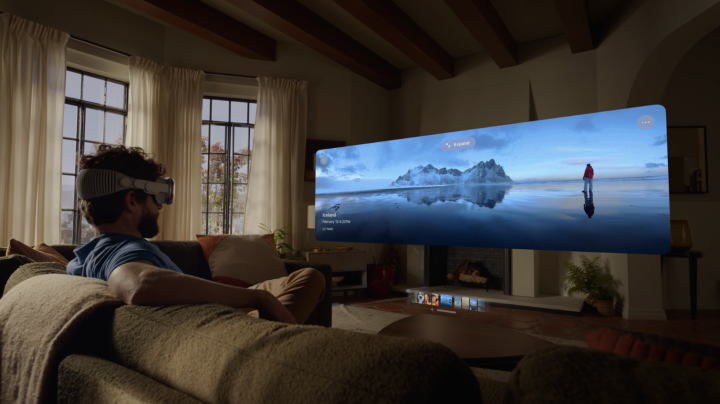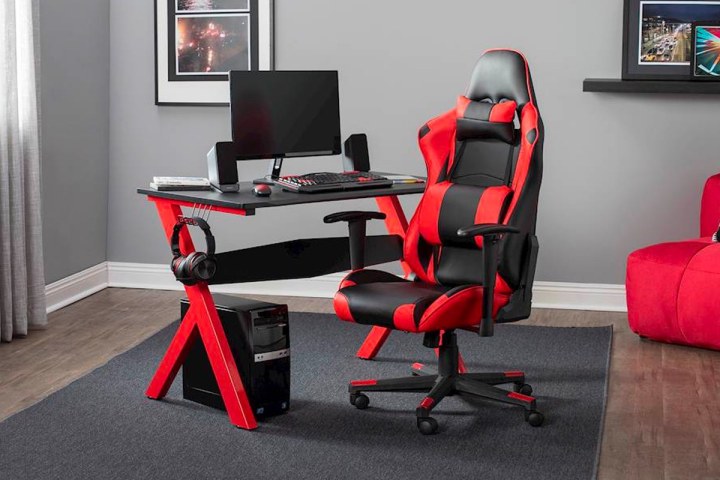At $3,500, there’s no beating around the bush — the Apple Vision Pro is expensive. Really, really expensive. And even though we did the math and found it’s most likely worth the price, that still doesn’t change the fact that you could spend that money on something else.
Sure, those things might not get you the exact same features you would from an Apple Vision Pro. In fact, some of them are quite different. But when you compare them side by side, you might get more enjoyment out of something else than you would from Apple’s high-tech headset. Here are some fun ways you could spend $3,500 instead of buying the Apple Vision Pro.
A high-end PC
High-end PCs aren’t cheap these days either, but they’re still cheaper than the Vision Pro — for the most part. You could get yourself a computer and deck it out with some of the latest components and still have money left over for a monitor, all depending on how extreme you want to get.
If you’re a gamer, you could buy a PC that breezes through 4K gaming and will continue to do so for years to come. In our roundup of the best PC builds, we determined that such a computer — with all of the bells and whistles you could dream of, but without going into unnecessary excess — will cost you just under $3,000. That still leaves you a bit of money for a solid monitor.
You don’t have to spend the full $3,000 on the computer, though. Swapping out some components for cheaper options, such as the pricey RTX 4090 for the RTX 4070 Ti, still nets you good performance and saves you hundreds of dollars. By the way, this PC could absolutely run VR games if you had a matching headset, so that’s some food for thought.
Let’s break this down a little. If you buy the RTX 4090, that’s $1,600, but scaling back to an RTX 4080 cuts the price down to $1,200, while the RTX 4070 Ti is around $800. Cutting back means a huge step down in performance, but it’ll still be a good gaming PC. A CPU is generally cheaper — the Ryzen 7 7800X3D is $450, but there are more budget-friendly options out there too.
Gaming is all well and good, but Apple doesn’t really market the Vision Pro as a gaming device — although it will have some Apple Arcade games and support for the DualSense controller. Still, if you’re less into gaming and more into the entertainment and productivity side of things, you can get yourself a fantastic PC for the money, too.
Content creators can spend around $2,000 and buy a solid PC for streaming, video editing, and rendering. That leaves $1,500 for a couple of high-quality monitors.
The good thing about building your own PC is that you can make changes to it based on your needs and your budget. You can spend money on one of the best GPUs, or you can choose a more affordable option and still have a PC that works well.
Having a PC means access to endless entertainment and productivity, from gaming to watching movies to digging through spreadsheets. You can even toss in an extra pair of ski goggles if you want to imitate the feeling of wearing an Apple Vision Pro.
A one-week vacation

People always say that money can’t buy happiness, but money can buy fun experiences that are harder to achieve without having it. A trip somewhere exciting is one such experience, and $3,500 gets you a cool vacation for the price of the Apple Vision Pro.
Your mileage may vary (literally), but for $3,500, two people could reasonably take a one-week trip to Japan, Hawaii, or Paris. Those are just examples — realistically, with $3,500 and enough creativity, you could go to many places around the world. This would cover the flights and the accommodations, although you might have to spend extra on trips and meals once you’re there.
It’s hard to estimate the cost of such a trip without knowing where you are and where you’re going, but a one-week trip to Japan is said to be around $1,600 if you’re not into staying in fancy places. Airbnb tells me that you can book a hotel room in Tokyo for $70 and up per night. A room in Hawaii is pricier, averaging $162 per night, but it’s still within that Apple Vision Pro budget.
Admittedly, a one-week vacation lasts for exactly that — a week. The Apple Vision Pro will last you a whole lot longer. Not forever, but hopefully at least a few years. If you look at it like that, then the XR headset is a better way to spend your money.
But on the other hand, will the memories of a fun week away be replaced by a headset, even if it can replicate a screen that’s 100 feet wide? Sure, you can put on a nature documentary and feel immersed, but that’s still not quite the same thing.
A used car

Let’s be real — you’re not gonna get a shiny Tesla for $3,500, but you can very much get a car that runs, and it’ll run just fine.
How useful is a car compared to the Vision Pro? That depends on your circumstances, but ultimately, you can use a car for more life-related things than the headset.
Apple won’t drive you to work or pick up your kids from school, but a car can. It can even take you on that vacation I just talked about above … but it can’t replace the spatial camera in Apple’s new headset.
Plenty of cars are up for sale online in the $2,000 to $4,000 range, and they’re not all old raggedy heaps that barely run anymore. I found a 2007 Jeep Grand Cherokee and a whole lot of Fords and Hondas up for grabs, just to name a few.
Every gaming console (plus a high-end TV)

Why limit yourself to a single headset that can run 100 games if you can get all the consoles that can run practically all the games for less?
I did the math, and it is indeed possible to get most of the relevant consoles and still have money left over. Whether it’s a good way to spend your money is debatable, but then again, the Vision Pro is debatable in that regard too.
Let’s assume you want a Nintendo Switch, an Xbox Series X, a PlayStation 5, and a Steam Deck. The latter might be dethroned by the Asus ROG Ally soon enough, but for now, let’s stick to the Valve handheld.
The Xbox will cost you around $500, and the PS5 another $500, same as the Steam Deck. The aging Switch is the cheapest of all at $300, and around $350 for the OLED model. That’s approximately $1,800 in total.
Next, you could buy a TV to play all these games on. As our guide to the best TVs for this year tells us, you could easily get an outstanding television with the money you still have after you purchase all of those gaming consoles. Whatever money you still have left can go toward games, amassing you quite the collection.
A hot tub

You could spend your $3,500 on a fancy trip and feel the touch of luxury for a week, or you could spend it on a hot tub and have access to that luxury every single day. Of course, there are a few caveats.
First and foremost, you need plenty of space to have a hot tub — but depending on the model, it might not be as much as you think. An inflatable hot tub that you can put up and then fold back up costs around $500 to $1,000, and while it’s not quite the same thing as a “proper” hot tub, it’s definitely nice enough.
If you want the real deal, the price goes up exponentially, but still fits our budget if you pick an entry-level model. You can find so-called “entry-level hot tubs” for $3,000 and above. Those are the ones that stand above ground, so you won’t have to dig a permanent hole in your yard for it to fit. You don’t even have to have a yard, although it helps.
Similarly, if you don’t want a hot tub, but still want a nice massage with warm water and some bubbles, a regular corner bathtub with those features should cost you less than $3,500 — and that includes the installation.
Depending on how cheap your hot tub or bathtub is, you could also get yourself a nice massage chair for a few hundred dollars. The Vision Pro can do a lot of things, but it can’t give you a massage — at least not yet.
Expensive or priceless?

While I’m giving you some fun ideas to spend $3,500, I’m not advising you not to buy the Apple Vision Pro. The goal is to illustrate how much that money can buy, and as I did my research for this article, it definitely put the price of the XR headset into perspective for me. It’s really expensive — out of reach for most people, even.
Does that make it overpriced, though? Not necessarily. The Vision Pro is the first of its kind. It’s breaking new ground and setting a new standard for AR and VR. You can control it with just your hands without holding anything; it can serve as a private home theater with a 100-foot TV; it’s a productivity tool that syncs seamlessly with the rest of the Apple ecosystem; it even offers spatial recording to capture memories you can replay later on.
With such a set of features, it’s not just expensive, but it’s also priceless in a way — there’s no one device that can replace it right now. That doesn’t mean that most of us should buy it, though. Like many similar devices, the Vision Pro will likely mature over time, and hopefully, the next generations will be more affordable, even if that means they won’t be quite as powerful.
If you’re not desperate to have it, you might as well sit this one out. But if you love the sound of it and you can afford it, there’s no reason not to get it. For many people, it won’t even be a choice, because no matter how you spin it, $3,500 is a lot of money to drop on an electronic device.





